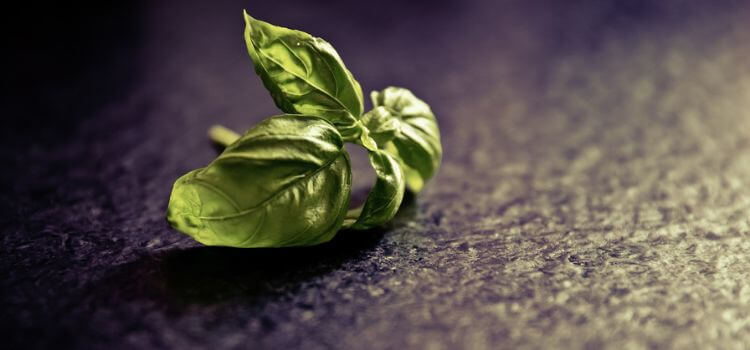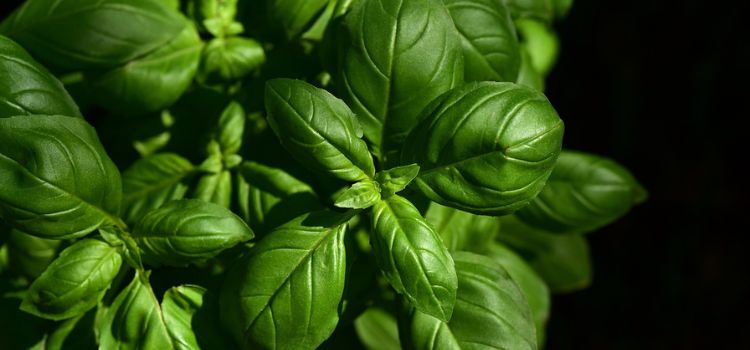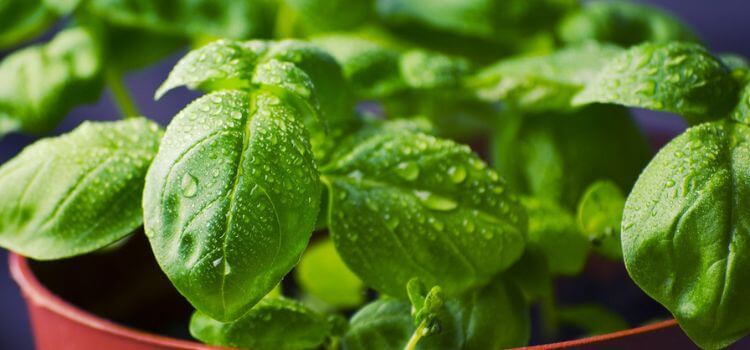As an Amazon Associate, I earn from qualifying purchases.
Basil leaves turning white can stem from various causes, including fungal infections and nutrient deficiencies. Solutions involve proper care and timely interventions.
Basil is a popular herb known for its aromatic leaves and culinary uses. Gardeners often encounter the issue of basil leaves turning white, which can be alarming. Several factors contribute to this problem, such as fungal infections, pest infestations, and environmental stresses.
Identifying the exact cause is crucial for effective treatment. Proper care, including adequate watering, sunlight, and nutrient management, can prevent and resolve most issues. Regular monitoring and timely interventions ensure healthy basil plants.
Are your basil leaves turning white? This can be alarming for any gardener. Various factors can cause this issue. Understanding these causes helps you take action to save your plant. Let’s dive into the common causes of basil leaves turning white.

Fungal Infections
Fungal infections can turn basil leaves white. Fungi thrive in moist conditions. They often appear as white spots or patches on leaves. Common fungal infections include:
- Powdery Mildew: Looks like white powder on the leaves.
- Downy Mildew: Causes white or yellow spots.
To manage fungal infections:
- Ensure proper air circulation.
- Avoid overhead watering.
- Use fungicides if necessary.
Pests Infestation
Pests can cause basil leaves to turn white. Common pests include:
- Aphids: Tiny insects that suck sap from the leaves.
- Spider Mites: Leave white spots and webs on the leaves.
To control pests:
- Inspect leaves regularly.
- Use insecticidal soap or neem oil.
Sunburn
Too much sunlight can burn basil leaves, causing them to turn white. Basil needs:
- 6-8 hours of sunlight per day.
- Shaded area during peak sun hours.
To prevent sunburn:
- Provide partial shade.
- Water the plant in the morning.
Nutrient Deficiency
Basil plants need nutrients to stay healthy. A lack of critical nutrients can cause white leaves. Common deficiencies include:
- Iron Deficiency: Causes yellowing and whitening of leaves.
- Magnesium Deficiency: Leads to white spots.
To fix nutrient deficiencies:
- Use a balanced fertilizer.
- Regularly check soil nutrient levels.
Overwatering
Overwatering can suffocate basil roots. This leads to white leaves. Signs of overwatering include:
- Wilting leaves.
- Yellowing or whitening of leaves.
To avoid overwatering:
- Water only when the top inch of soil is dry.
- Ensure proper drainage.
Underwatering
Underwatering can stress basil plants. This can cause leaves to turn white. Signs of underwatering include:
- Dry, brittle leaves.
- Leaves turning white or brown.
To prevent underwatering:
- Water the plant regularly.
- Mulch to retain soil moisture.
Extreme Temperatures
Basil thrives in moderate temperatures. Extreme heat or cold can turn leaves white. Ideal temperature range:
- 60°F – 80°F (15°C – 27°C)
To protect basil from extreme temperatures:
- Move the plant indoors during cold weather.
- Provide shade during extreme heat.
Chemical Exposure
Exposure to chemicals can damage basil leaves. This causes them to turn white. Common chemicals include:
- Pesticides: Can burn the leaves.
- Herbicides: Drift can affect nearby plants.
To prevent chemical damage:
- Use organic alternatives.
- Apply chemicals carefully.

Root Rot
Root rot is a fungal disease. It affects the roots and turns leaves white. Symptoms include:
- Wilting leaves.
- White or yellowing leaves.
To prevent root rot:
- Ensure proper drainage.
- Avoid overwatering.
Poor Drainage
Poor drainage can cause waterlogging. This suffocates the roots and turns leaves white. Signs of poor drainage include:
- Standing water in the pot.
- Wilting or white leaves.
To improve drainage:
- Use well-draining soil.
- Add perlite or sand to the soil mix.
Air Circulation Issues
Poor air circulation can lead to fungal growth. This turns basil leaves white. Signs of poor air circulation include:
- Stale, humid air around the plant.
- White or moldy spots on leaves.
To improve air circulation:
- Space plants adequately.
- Use a fan to circulate air.
Transplant Shock
Transplant shock occurs when moving basil to a new location. This stress can turn leaves white. Symptoms include:
- Wilting leaves.
- White or yellowing leaves.
To reduce transplant shock:
- Water the plant well before transplanting.
- Handle roots gently.
Genetic Factors
Sometimes, genetics play a role. Certain basil varieties may have white leaves naturally. Signs include:
- Consistent white leaves from seedling to maturity.
To identify genetic factors:
- Research the specific basil variety.
- Consult with other gardeners or experts.
Solutions For White Basil Leaves
White basil leaves can be a gardener’s nightmare. This issue often arises from various factors, including pests, diseases, or environmental stresses. Fortunately, there are solutions to address these problems effectively. Below are the best methods to combat white basil leaves and restore your basil plant’s health.
Prune Affected Leaves
Pruning affected leaves is essential for controlling the spread of diseases and pests. Remove all white or discoloured leaves using sterilized scissors. This prevents the problem from spreading to healthy parts of the plant.
- Inspect your basil plant regularly.
- Use sharp, clean scissors to cut off the affected leaves.
- Dispose of the pruned leaves far away from your garden to avoid contamination.
Pruning helps remove the affected parts and encourages new growth. Regular pruning keeps your basil plant healthy and thriving.
Use Fungicides
Fungal infections are a common cause of white leaves on basil plants. Applying fungicides can be an effective solution to eliminate these infections.
- Choose a fungicide that is safe for edible plants.
- Follow the instructions on the label for proper application.
- Spray the fungicide evenly on the affected areas.
Consistent application may be necessary to see results. Always use fungicides sparingly to prevent harming your plant and the environment.
Natural Pest Control Methods
Pests like aphids and spider mites can cause white spots on basil leaves. Using natural pest control methods can help you manage these pests effectively.
- Introduce beneficial insects like ladybugs that feed on aphids.
- Use neem oil as a natural pesticide.
- Spray a mixture of water and dish soap to deter pests.
Natural methods are safer for your plants and the environment. Regular monitoring and early intervention can keep pest problems under control.

Provide Adequate Sunlight
Basil plants require plenty of sunlight to thrive. Insufficient sunlight can lead to pale or white leaves.
- Ensure your basil plant gets at least 6-8 hours of sunlight daily.
- If growing indoors, place the plant near a south-facing window.
- Consider using grow lights if natural sunlight is inadequate.
Adequate sunlight boosts the plant’s immunity and overall health, reducing the risk of white leaves.
Fertilize Properly
Nutrient deficiencies can also cause basil leaves to turn white. Proper fertilization can address this issue.
- Use a balanced fertilizer with equal parts nitrogen, phosphorus, and potassium.
- Follow the recommended dosage on the fertilizer package.
- Fertilize every 4-6 weeks during the growing season.
Proper fertilization ensures your basil plant gets all the essential nutrients needed to stay healthy and vibrant.
Adjust Watering Schedule
Overwatering or underwatering can stress basil plants, causing their leaves to turn white. Adjusting your watering schedule can help.
- Water your basil plant profoundly but infrequently.
- Allow the top inch of soil to dry out before watering again.
- Ensure the soil is well-draining to prevent waterlogging.
Consistent and proper watering helps maintain the plant’s health and prevents white leaves.
Protect From Extreme Temperatures
Basil plants are sensitive to extreme temperatures. Protecting them from such conditions can prevent white leaves.
- Keep the plant indoors during frost or extreme heat.
- Use mulch to insulate the soil and maintain a stable temperature.
- Provide shade during the hottest parts of the day.
Temperature control ensures the basil plant remains healthy and free from stress-induced white leaves.
Avoid Chemical Exposure
Exposure to harsh chemicals can cause basil leaves to turn white. Avoiding such exposure is crucial.
- Refrain from using harsh pesticides and herbicides near your basil plant.
- Opt for organic and natural alternatives.
- Ensure that household chemicals do not come in contact with the plant.
Minimizing chemical exposure helps keep your basil plant healthy and prevents white leaves.
Improve Drainage
Poor drainage can lead to root rot, which manifests as white leaves. Improving soil drainage can prevent this issue.
- Use well-draining soil mixes.
- Add perlite or sand to the soil to enhance drainage.
- Ensure pots have drainage holes.
Good soil drainage prevents waterlogging and keeps the basil plant’s roots healthy, reducing the risk of white leaves.
Enhance Air Circulation
Poor air circulation can foster fungal growth, leading to white leaves. Enhancing air circulation can mitigate this problem.
- Space plants adequately to allow airflow.
- Use fans to improve air movement in indoor settings.
- Prune regularly to avoid overcrowding.
Better air circulation reduces the risk of fungal infections and keeps your basil plant healthy.
Gradually Introduce Transplants
Transplant shock can cause basil leaves to turn white. Gradually introducing transplants to their new environment can help.
- Harden off the plants by exposing them to outdoor conditions gradually.
- Start with a few hours of sunlight and increase the duration daily.
- Water the transplants well before and after transplanting.
The gradual introduction helps the basil plant adapt to its new environment, reducing the risk of white leaves.
Choose Resistant Varieties
Some basil varieties are more resistant to diseases and pests. Choosing resistant varieties can help prevent white leaves.
- Opt for varieties like Thai basil or lemon basil, known for their resistance.
- Consult with local nurseries for recommendations on resistant varieties.
- Plant-resistant varieties alongside traditional ones for better results.
Choosing resistant varieties ensures a healthier basil plant with fewer issues related to white leaves.
Consult With Experts
If the problem persists, consulting with gardening experts can provide tailored solutions. Experts can diagnose the issue accurately and recommend specific treatments.
- Visit local gardening centers for advice.
- Join online gardening forums and communities.
- Hire a professional gardener for in-depth analysis.
Expert consultation provides specialized solutions, ensuring your basil plant remains healthy and free from white leaves.
Frequently Asked Questions
Basil leaves turning white could be caused by powdery mildew. This fungal disease thrives in humid conditions. Improper watering and poor air circulation can also contribute to its spread. To prevent it, it’s essential to maintain dry leaves and good airflow around your plants.
Preventing sunburn, which can cause white spots on basil leaves, is in your hands. When basil plants are suddenly exposed to intense sunlight, the leaves can suffer sunburn, leading to white or bleached spots. However, by gradually increasing sun exposure, you can help your plants acclimate and prevent this issue.
Treating white spots on basil involves identifying the cause first. Applying a fungicide or a mixture of baking soda and water can help if it’s powdery mildew. For sunburn, provide shade to your plants during the hottest parts of the day. Permanently remove severely affected leaves.
Eating basil with white spots caused by powdery mildew is not recommended. While it might not be harmful, the taste and texture can be affected. It’s best to remove affected leaves and only use healthy ones for consumption.
Conclusion
Understanding the causes of basil leaves turning white is the key to saving your plants. By following the solutions to keep them healthy, you are taking the right steps. Addressing these issues early is a surefire way to ensure vibrant, thriving basil. Stay attentive to your plant’s needs and watch for early signs, and you can be confident that your basil will stay healthy and green.
Your basil will thank you with lush green leaves.

